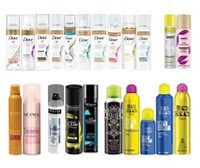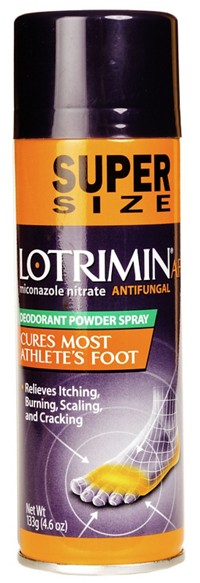Advertisement
Grab your lab coat. Let's get started
Welcome!
Welcome!
Create an account below to get 6 C&EN articles per month, receive newsletters and more - all free.
It seems this is your first time logging in online. Please enter the following information to continue.
As an ACS member you automatically get access to this site. All we need is few more details to create your reading experience.
Not you? Sign in with a different account.
Not you? Sign in with a different account.
ERROR 1
ERROR 1
ERROR 2
ERROR 2
ERROR 2
ERROR 2
ERROR 2
Password and Confirm password must match.
If you have an ACS member number, please enter it here so we can link this account to your membership. (optional)
ERROR 2
ACS values your privacy. By submitting your information, you are gaining access to C&EN and subscribing to our weekly newsletter. We use the information you provide to make your reading experience better, and we will never sell your data to third party members.
Consumer Products
Finding benzene everywhere we look
Questions pile up as scientists find the carcinogen in more and more consumer products
by Craig Bettenhausen
December 20, 2021
| A version of this story appeared in
Volume 100, Issue 1

Hand sanitizers. Spray sunblock and sun aftercare lotions. Athlete’s foot and jock itch sprays. Deodorant and antiperspirant sprays. Dry shampoo and conditioner sprays.
These are all products found to contain benzene over the last year. The rash of discoveries raises three big questions: How big of a problem is this? Where is the benzene coming from? And, is it a new problem, or just one that no one had noticed? None are easy questions to answer.
Benzene is found in petroleum and most kinds of smoke, and its derivatives are ubiquitous in natural and synthetic materials. Acute exposure to benzene carries the normal asphyxiation and central nervous system depression risks associated with inhaling organic solvents. Benzene can also be absorbed through the skin or digestive tract. Chronic exposure is linked to leukemia and other blood disorders.
People use many of the contaminated products on a daily basis. “That is chronic exposure, if you’re using it every day,” says Mary Fox, a professor at the Johns Hopkins Bloomberg School of Public Health who studies air pollutants.
Benzene’s metabolites seem to do the damage, according to a 2010 World Health Organization report. Benzoquinone, benzene oxide, and muconaldehyde, in particular, make their way into bone marrow, where they interfere with DNA chromosomes, leading to structural changes, cell death, and cancer, among other ill effects.
But determining whether the low levels found in consumer products are hazardous isn’t so easy.
The WHO air quality guidelines on benzene lead with this statement: “Benzene is carcinogenic to humans and no safe level of exposure can be recommended.”


Sources: US Environmental Protection Agency, World Health Organization, Valisure, Int. J. Environ. Res. Public Health 2021, DOI: 10.3390/ijerph18041872.
That’s not a new conclusion. Back in 1948, the American Petroleum Institute, an industry group, said in a toxicological review that “Inasmuch as the body develops no tolerance to benzene, and as there is a wide variation in individual susceptibility, it is generally considered that the only absolutely safe concentration for benzene is zero.”
Some academic research on workers exposed to airborne benzene finds that breathing air at work with an average of 50 parts per billion (ppb) over a 40-year career brings significant increases in leukemia risk . Most papers show a strong link starting at 1,000 ppb. Almost all reports find a strong association at or above a long-term exposure at work of 4,000 ppb.
Workers in industries such as rubber, chemicals, paint, and petroleum may be exposed to much higher levels than people in other lines of work. Fox points out that in a workplace setting, employers are expected to educate their workforce and take all reasonable steps to mitigate and minimize health and safety risks, and employees are assumed to have made an informed choice about the hazards and risks they’re willing to tolerate.
That is not true for the public using contaminated consumer products. “This is potentially a completely involuntary exposure that they are not aware of at all,” Fox says.
According to Valisure, the analytical lab that discovered benzene in many of the products identified so far, a normal spritz of the most contaminated product it has measured, Procter & Gamble’s Old Spice Pure Sport antiperspirant spray, would create a 1 m3 cloud with a benzene concentration of 28 ppb. If that cloud diffused through a 1.85 m2 bathroom, the air would contain around 6 ppb throughout.
P&G recalled all lots of 18 different Old Spice and Secret spray deodorants and antiperspirants on Nov. 23, a couple of weeks after Valisure published its results. On December 17, P&G also recalled a number of lots of dry shampoo and dry conditioner sprays in its Waterl<ss, Pantene, Aussie, Herbal Essences, Old Spice, and Hair Food brands, saying the contamination trend had prompted the firm to review its entire aerosol portfolio.
Though the benzene exposures likely to be caused by the contaminated personal care products are well under the generally agreed-upon safe ranges for workplace exposure, they add to other exposure routes that already bring many people close to or above public health recommendations.
Outdoor air has a background benzene level that, according to the WHO, ranges from 0.31 ppb in rural areas to 1.5–2.3 ppb in suburbs and cities. Indoor air in nonsmoking homes ranges from 0.8–1.8 ppb, and smoking pushes that up to 5–10 ppb.
The US Environmental Protection Agency recommends a 0.4 ppb limit for long-term chronic exposure. The WHO estimates that a lifetime breathing air with an average benzene concentration of 0.53 ppb creates one new leukemia case in every 100,000 people.
Joe Graedon, a patient welfare advocate, says that for consumers, the calculations aren’t so complex. Joe and Terry Graedon run a website called the People’s Pharmacy and host an NPR podcast of the same name. “The bottom line is, most people would prefer to avoid carcinogens, even in low doses, over long periods of time,” Graedon says. “And body care products are used on a daily basis, if not more often.”
Stopping benzene contamination requires understanding where it comes from. But as Valisure CEO David Light points out, the benzene could be in multiple ingredients used in personal care products.
The lion’s share of contaminated products are spray formulations propelled by butane or propane, which are derived from petroleum. P&G’s Dec. 17 recall notice says, in part, “our review showed that unexpected levels of benzene came from the propellant that sprays the product out of the can.” That statement is the most conclusive statement yet about the origin of the benzene in contaminated products.
Though most of the affected products use propellants, other ingredients are also potential sources of contamination. Benzene is used to produce some petroleum-based thickeners called carbomers, which are used in some of the affected gels and lotions. Carbomers are acrylic acid polymers that are sold in cosmetic and pharmaceutical grades that don’t use benzene, and some people suspect that manufacturers of personal care products may have substituted less-pure industrial grades.
Ethanol is another potentially contaminated ingredient. It’s used in many of the spray products and is the primary ingredient in hand sanitizers, the first category of products in which Valisure found benzene. In the early months of the COVID-19 pandemic, hand sanitizers were in high demand and short supply. Much of the ethanol that went into sanitizers was redirected from ethanol produced for fuel, so benzene may have entered through cross-contamination of reaction vessels or transportation equipment.
Although it may be hard to determine how benzene got into the consumer products, the why is clear, Graedon says. “It’s there because somebody got sloppy; because in the manufacturing process, there were shortcuts.”
Hand sanitizers are considered over-the-counter drugs and should be produced at pharmaceutical purity, says Chuck Crawford, chief innovation officer at Gojo, the company behind the Purell line of hand sanitizers. “I think a lot of folks who are not traditionally in the space of producing over-the-counter drugs stepped into that space without a real firm understanding of what it truly took to serve the drug space in terms of Good Manufacturing Practices,” the FDA regulations for making drugs.
Jim Arbogast, Gojo’s vice president for hygiene sciences and public health advancements, says the company accounts for several possible ways benzene can enter the ethanol supply chain. Gojo requires suppliers to submit analytical data on every batch; internal staffers run their own tests. “We have a lot of really good human power around the analytical chemistry and quality controls to make sure we don’t compromise,” he says.
The FDA wasn’t able to inspect every distillery, formerly idled chemical plant, and fuel ethanol facility suddenly producing hand sanitizer at the start of the pandemic, and the understandable priority was getting people what they needed to combat COVID-19. “A lot of people tried to do good,” Crawford says. “There was a need and folks tried to fill that need, with all the best of intentions.”
The good news is that, at least in the hand sanitizer market, the problem is not longstanding or ongoing. Crawford says that most of the organizations that jumped into the business have jumped back out, and the established players haven’t had benzene problems. However, he says, many bottles of potentially problematic stock are still out in the marketplace.
In the other products—sun care sprays and lotions, antifungal sprays, and spray deodorants and antiperspirants—there’s less to suggest that the problem resulted from COVID-19 market disruptions. Most of the brands on Valisure’s benzene contamination lists are from major, established manufacturers.
But determining if benzene has been contaminating these products for years isn’t possible without data on older batches. “If you don’t look, you often don’t find,” Graedon says. Valisure “basically is doing what, in my opinion, the Food and Drug Administration should have been doing for decades.”
Screening consumer products for contaminants isn’t Valisure’s main business. By day, Valisure is a contract analytical lab for pharmaceutical manufacturers, wholesalers, and health-care service companies. Light says the company does its consumer product analysis at night and on weekends.
Light says he would welcome paying contracts along these lines, but the work is also in keeping with the core values for him and his team. “I have five kids. I want them to have clean sunscreen to be wearing. And, you know, hopefully most people will use deodorant.”
The FDA currently allows up to 2,000 ppb benzene in medications that cannot be made without using it. For substances that don’t absolutely require benzene to manufacture—including all the products that Valisure tested, Light says—the agency bans its use. He and Graedon both say the recent run of contamination indicates that it’s time for the agency to set a limit on benzene as an impurity, akin to how it says a snack-size box of raisins can contain no more than 1.25 insects and 4.4 fruit-fly eggs.
Light says he expects more from the large consumer product firms. “It’s one thing to make an overall commitment” to quality, he says. “It’s another thing to be actually testing and qualifying for all of these things. I certainly don’t believe that any of these manufacturers intend for such contamination to be there,” Light says. “But how far are you really going to ensure that these problems don’t end up in the products?”




Join the conversation
Contact the reporter
Submit a Letter to the Editor for publication
Engage with us on Twitter